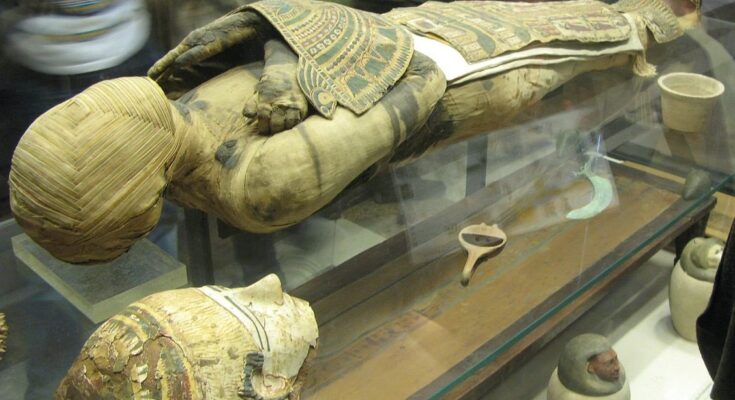Scientists have been investigating the death of the “screaming woman” in Egypt whose mummified remains were found by archaeologists in 1935 in a tomb near Luxor.
With her mouth agape, seemingly frozen forever in a scream, the woman who died around 3,500 years ago has captivated their imaginations since her discovery.

A new team of scientists recently used CT scans to uncover details about the mummy’s morphology, health conditions, and preservation. They also employed infrared imaging and other advanced techniques to “virtually dissect” the remains and investigate the cause of her striking facial expression.
Their findings, published Friday in the journal Frontiers in Medicine, revealed that the woman was 48 years old when she died, based on analysis of a pelvis joint that changes with age. Certain aspects of the process used to mummify her stood out.
Her body was embalmed with frankincense and juniper resin, lavish, expensive substances that would have been traded from afar, said study author Sahar Saleem, a professor of radiology at Kasr Al Ainy Hospital at Cairo University, in a statement.
Saleem also found no incisions on the body, which was consistent with the assessment made during the original discovery that the brain, diaphragm, heart, lungs, liver, spleen, kidneys and intestines were still present.
‘Screaming Woman’ in Egypt Died in Pain

The failure to remove internal organs, the study noted, was unusual because the classic method of mummification from that period included the removal of all such organs except the heart.
The researchers found that the anonymous woman stood 1.54 meters, or a little more than 5 feet, tall and suffered from mild arthritis of the spine, with scans revealing bone spurs on some vertebrae that make up the backbone. Several teeth, likely lost before death, were also missing from the woman’s jaw.
However, the study was not able to determine the exact cause of death. “Here we show that she was embalmed with costly, imported embalming material,” Saleem said in a news release.
“This, and the mummy’s well-preserved appearance, contradicts the traditional belief that a failure to remove her inner organs implied poor mummification.”
Only a few ancient Egyptian mummies have been found with their mouths open, the study noted, with embalmers typically wrapping the jawbone and the skull to keep the deceased’s mouth shut.
Saleem said the well-preserved nature of the mummy, the rarity and expense of the embalming material, along with other funerary techniques such as the use of a wig made from a date palm and rings placed on the body, seemed to rule out a careless mummification process in which embalmers neglected to close her mouth.
The mummy’s “screaming facial expression” could be read as a cadaveric spasm, a rare form of muscular stiffening associated with violent deaths, implying that the woman died screaming from agony or pain, according to the study.
It’s possible, the study authors suggested, that she was mummified within 18 to 36 hours of death before her body relaxed or decomposed, thus preserving her open-mouth position at death.
The “screaming woman” had been buried beneath the tomb of Senmut, an architect of the temple of Egyptian queen Hatschepsut (1479–1458 BC) who held important positions during her reign. It’s thought the woman was related to Senmut, according to the study.
The discovery of her remains occurred during an expedition led by the Metropolitan Museum of Art in New York City, and her coffin is on display there today. Her mummified body is stored at the Cairo Egyptian Museum.
Related: Ancient “City of the Dead” With Mummy Tombs Found in Egypt



